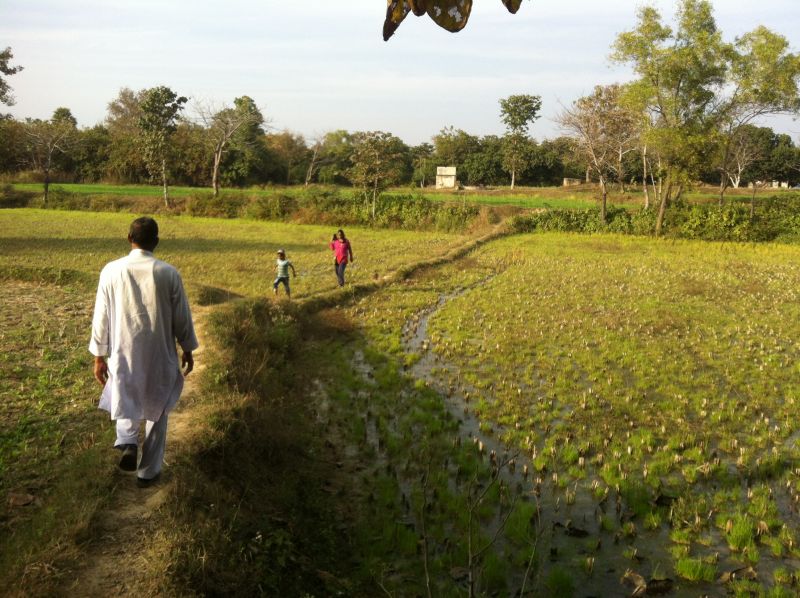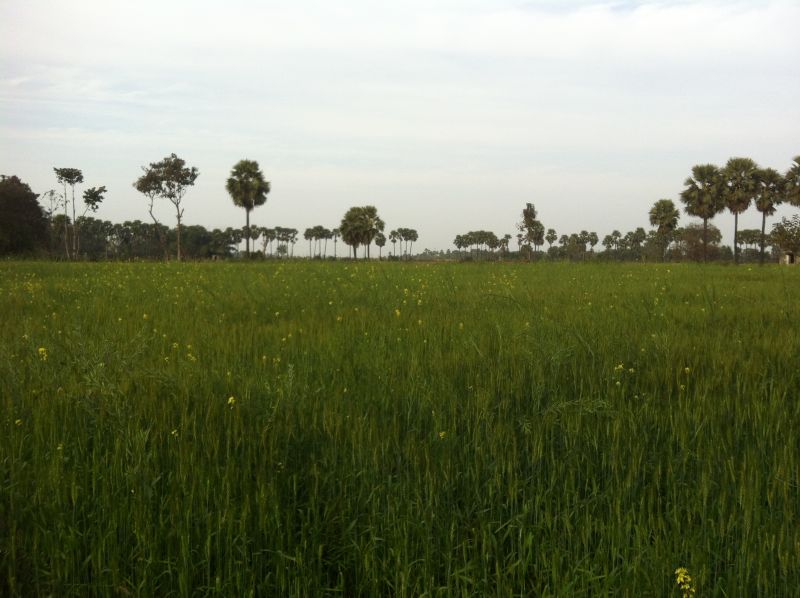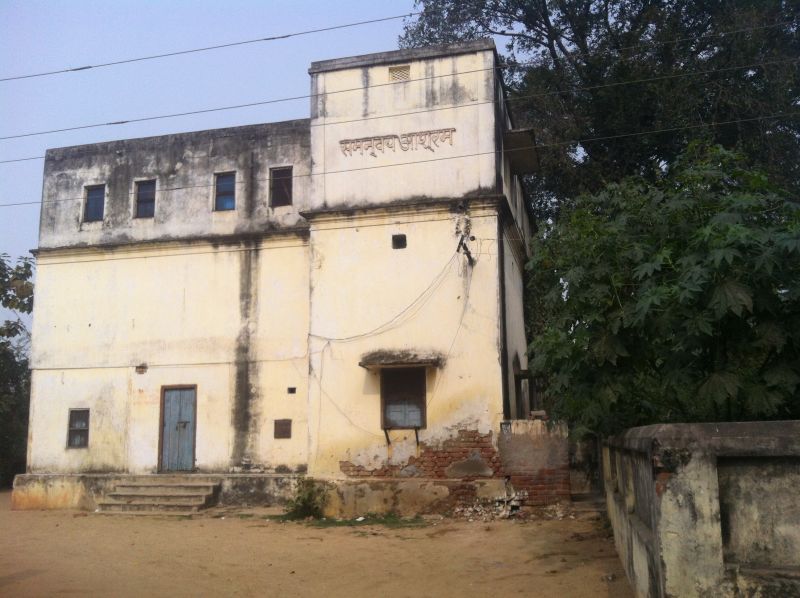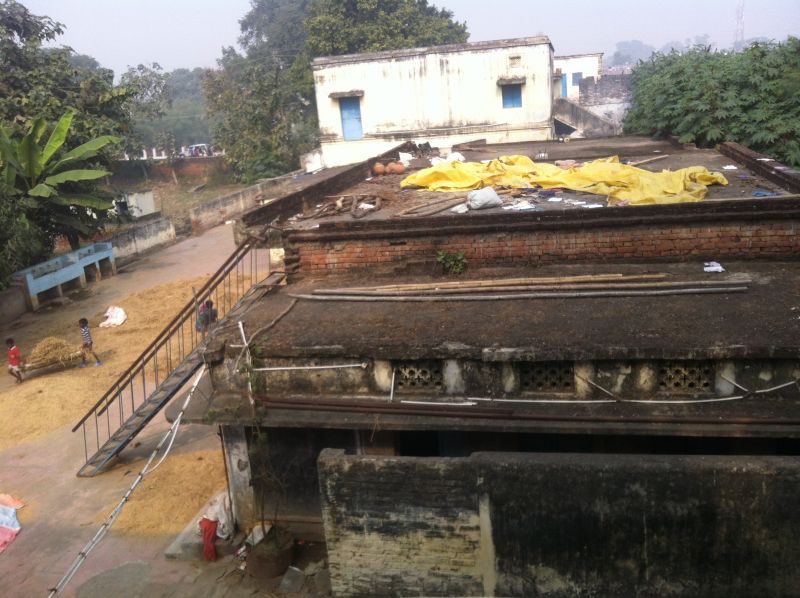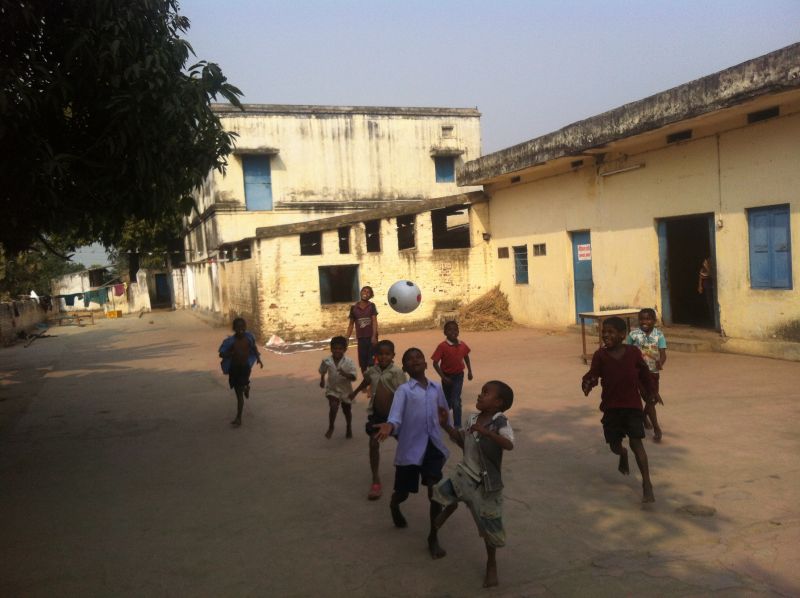Moved By Dwarkoji’s Love
“Chitta shuddha tari, shatru mitra hoti.
Vyaghra he na khaati, sarp taya.”
When the ‘mind’ (chitta) is pure, even your enemy will become a friend.
Neither will a lion eat you nor will a snake bite you.
Compassionate first meeting
I can feel the vibrations of love and compassion by just remembering the time spent with Dwarkoji. It was December 2014, Swara and I were in Sarnath for a gathering on ‘Business Beyond Self-Interest’ and on the way back we planned to visit Bodhgaya for a day to meet Dwarkoji. What started as a humble “Namaste” on meeting him for the first time, ended up being a 4-hour session full of powerful stories, deep insights, smiles, tears, surprising truths, contemplative pauses, simple lessons and a lot more… the conversation was just flowing naturally and the three of us connected very deeply.
I had known about Dwarkoji through the film on Samanvaya Ashram made by MAM movies, blog posts written by those who have been moved by his presence, his work on providing education to children from communities that were financially poor, all of which he calls an “arrangement of life”. He has worked extensively on the Bhoodan Movement and was also a manager of Vinobaji’s Paramdham Ashram in Paunar where he led some significant experiments of Rishi Kheti (natural methods of farming), Kanchan Mukti (living without money) etc., In the mid-1950s, he came to Bihar and in this state alone, he was an instrument for distributing 5,000 acres of land to 3,000 families and helped create 13 new villages. He was given the responsibility of the Samanvaya Ashram in Bodhgaya 6 months after its inauguration in 1954 and he has been leading it since then. On the outside, Dwarkoji behaves like an ordinary person, but deep inside, he carries extra-ordinary life experiences. The more I spoke to him, the more it became clear as to why The Dalai Lama had once remarked: “Dwarkoji, I preach compassion but you are living it.”


When we asked him how we can serve him and the ashram, he told us that we’d have to stay at the ashram beyond a day to know that. He asked us whether we could extend our trip and stay for a few more days and when we said that wasn’t possible this time due to prior commitments, he looked into our eyes and said: “Please come again for a week. We should do some ‘thinking aloud’ on raising collective consciousness / soul force and taking the work of Vinoba ahead.”
Something inside told me, “Yes, will come back soon.”
Deep desire to serve Dwarkoji
Our stay in Bodhgaya got extended by a day due to forces beyond our control and some divine ‘arrangement’ :) So we decided to spend the extra day to do some groundwork on what can be done to support Samanvaya Ashram and then return to Bodhgaya soon. We had two things in mind:
1) Get a better understanding of his vision and then blog about his message that serves as an invitation to youth who believe in the power of truth and nonviolence. Also made a small list of communities where we could find volunteers who would love to serve here.
2) Explore what can be done to take the work ahead for renovation and repair of the Ashram so that the members and volunteers who’d like to stay have a hygienic living condition.
Back in Bodhgaya with family
While our initial plan was to revisit immediately in the end of December 2014, finally our karma ripened in early February. My wife Shaalini and 7-year old daughter Simran were also able to join. Swara could not join us in person this time, but she was always with us in spirit.
We had the good fortune of spending a week with Dwarkoji in Bodhgaya. We had no agenda or a fixed plan; our intention was to just be with him and serve at the Samanvaya Ashram in whatever little ways we can. Personally, my readiness was with both the extremes – either this could be the last visit to Samanvaya Ashram where we serve with whatever we can for one week or if things emerge for us to stay longer and serve then be open to that too.
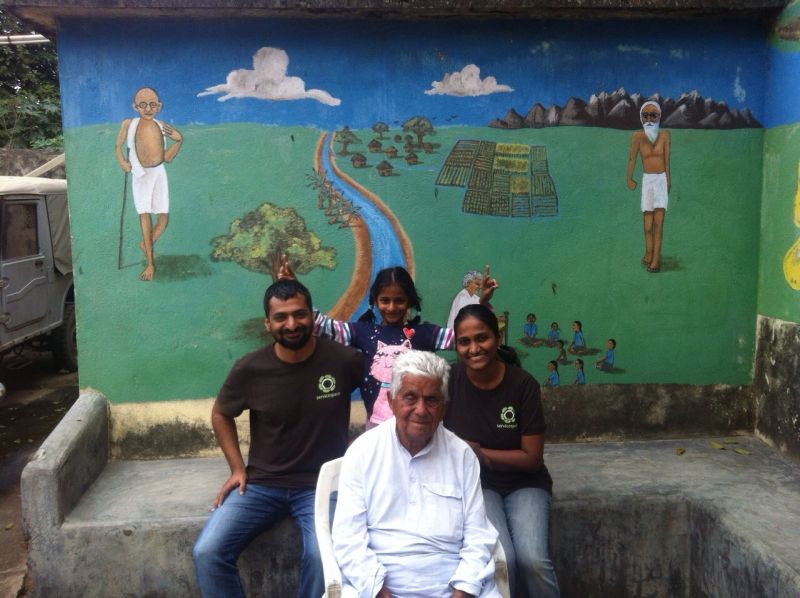
Everyday we would have enriching conversations with him on topics ranging from “purpose of life” and “how to contribute towards raising collective consciousness” to “practicing nonviolence in the most difficult times” and “role of money in social development”. And of course, many stories of his direct experience with Vinoba Bhave.
Birth of the Bhoodan (Land Gift) Movement
Dwarkoji shared story of the day’s event that gave birth to the Bhoodan movement. Vinobaji was on his walking tour in Pochampalli, Telangana when a few Harijans (considered to be of lower caste at a time when caste discrimination was very high in India) begged for food and money. Vinobaji asked why they don’t work and earn instead of begging. They said they do not have land and no one is employing them for work and requested Vinobaji to provide employment. After talking to them further, he figured out that it would take 80 acres of land for all the landless people in that village to be gainfully occupied with agriculture work and sustain their families. He thought that rather than asking the Government for land, he himself will ask the villagers. If some of the landowners would be willing to donate a piece of their land to the landless, the issue could be resolved locally. The conventional ‘enemy ’image of landlords was that of a person who exploits the poor and landless. Vinobaji’s request appealed to the inner goodness in everyone and he asked the landowners to consider the landless as their own family members. One person, Ramachandra Reddy was so moved that he offered to donate 100 acres of his land to the Harjians.
I opened the book on Vinobaji’s life (Moved By Love) and re-read this paragraph that I find very inspiring:
---------------------------------------------------------------------------------
On April 15, 1981, in Pochampali in Telangana, the Harijans asked for land and were given 100 acres. That night I could not sleep for more than 3-4 hours (reflecting on) - what was this that had happened! I believe in God, I also believe in Arithmetic. I began calculating; if one were to ask for land for all landless in India, it would take 50 million acres to satisfy their needs. Could so much land be had for the asking! Then I had a direct talk with God, just as I might talk face to face with another human being. "If you hesitate," he said, "if you fear this task, then you must give up your faith in nonviolence and stop claiming to be nonviolent. Have faith; ask; and ask Again." He also said that he who put hunger in a child's stomach also put milk into the mother's breast. He does not leave His work half done. This set all my doubts at rest. The very next day I started asking for land.
---------------------------------------------------------------------------------
Part of the 30-acre land in Bagha village, where Samanvaya Vidyapeeth is located. It is about 35 kms from Samanvaya Ashram in Bodhgaya. When this land was gifted in Bhoodan, it was completely barren and Dwarkoji’s team worked tirelessly to convert it into a highly fertile agricultural land. Samanvaya Vidyapeeth in Bagha has about 40 residential students and 50 day scholars from the village, while Samanvaya Ashram in Bodhgaya has about 30 residential students. The curriculum is based on Gandhiji’s Nai Taleem - education of life, education for life, education through life.
‘Failure’ of Bhoodan and Vinobaji’s key reflections for future
It is said that Gandhiji was a fruit of all the spiritual efforts of the past and a seed for the future. Vinoba was the spiritual successor and lived a life with a mission to achieve union of hearts. Bhoodan was undoubtedly a historic movement, an incredible example of love in action. However, after more than a decade of tireless work on Bhoodan, Vinobaji had to ask this question to himself: "Despite good intentions, years of collective effort and millions of acres of land donated generously, why did the Bhoodan movement 'fail' at the last mile?" and then he went into one year of silence just to ponder on this one question. He called this phase of his life as "sookshma mein pravesh"- entering the subtle.
After he came out of a year's silence, his conclusion was that it failed because the ‘chitta’ was not developed at a collective level. He then wrote in detail about what needs to be done in the 21st century for "Samoohik Chitta Nirman", developing collective consciousness / soul force. We not only have to individually live our lives with the values of truth, love, nonviolence, compassion and justice but also have collective practices to contribute in raising the consciousness at the universal level. He then spoke about Vinoba’s vision of “Jai Jagat”, the whole world as one family.
Hope over despair
Meeting Dwarkoji was undoubtedly a very inspiring and a positive experience. Every word he spoke was coming out of his experiential wisdom. Another dimension that I liked about him was his openness to talk about failures and mistakes that he made in life. He spoke about how arrogance had once seeped into his life when people started revering him because of his good work on Bhoodan. Even though he was detached from politics, he had started going around saying that only those political candidates that he approved in his locality can win because his words had the power of influencing other peoples’ vote. I found his candidness very refreshing.
He also spoke openly about how most people at Samanvaya Ashram today don’t support his methods and principles. A volunteer who has been living at the Samanvaya Ashram for the past few months tells me that the operating principles of Ashram in multiple ways have majorly digressed away from the core principles laid out by Gandhi and Vinoba. He says that when Dwarkoji was active, it was a different story, but as he started getting older, the state of the ashram and quality of the activities has been deteriorating. The physical infrastructure of the Ashram is also in poor condition. We happened to have a friend in Bodhgaya with experience in construction work, so we quickly called him to get a preliminary assessment of the building and he pointed a few things that needed immediate attention – like “part of the ceiling of guesthouse is on high risk and may fall” and and “water tank, pipes and drainage system needs to be fixed soon, the current water is very unhygienic and there are multiple leakages.”

While the physical infrastructure repair and renovation can be managed with the help of professionals, the larger concern was the apathy of many ashram members towards core values of truth, love, nonviolence, compassion and justice that Dwarkoji insists people should live by. We were also cautioned by many people around that a large amount of donation money coming in to Samanvaya Ashram’s Trust is being diverted out for personal gains by some people and we were advised not to donate money without surety of where it will be spent. We haven’t been able to find out the details, as it didn’t feel right at this stage to dig in that direction, and wanted to trust the goodness in every person. When we spoke to a few staff members, they seemed frustrated and felt that Dwarkoji’s methods were too idealistic and outdated and hence they stopped following his instructions. A few other staff shared there were some constraints. And because of the high amount of respect they have for Dwarkoji, they are trying to make their way through the constraints, which includes not asking for money.
When we asked Dwarkoji what keeps him motivated to personally hold on to values strongly even when most people around him don’t agree to it and he says “The work is worth doing hence I’m doing it in the right way. I’ve stopped expecting much from them”. Then we asked, what gives him the hope that this work will continue in the true spirit after he has passed away and he says: “There is an arrangement in life that has already been made by a higher force. Your coming here to meet me is also part of that arrangement. God will send the right person at the right time to carry on this work in the way it should progress.”
He again shared about the need for raising collective consciousness / soul force. He also told us about Vinobaji’s belief that 21st century is going to be Mother’s century where women will take lead in spiritual development. He feels that if younger people who believe in Gandhi and Vinoba’s ideals come to Samanvaya Ashram and start working collectively in the right spirit, then even the existing staff will change for better.
Serving the kids, small acts with great love
As we offered our time to serve the kids in the Samanvaya Ashram’s school with little acts like cutting their nails, combing their hair, engaging with art and colouring or simply playing with them, our effort was to give them the same love that we give our own daughter. It was a joy to see our daughter Simran readily share her toys and colours with the kids and being super enthusiastic to comb their hair and play with them as one among them. Through these little acts of love, we could experience oneness and Dwarkoji’s presence made it all seem effortless.
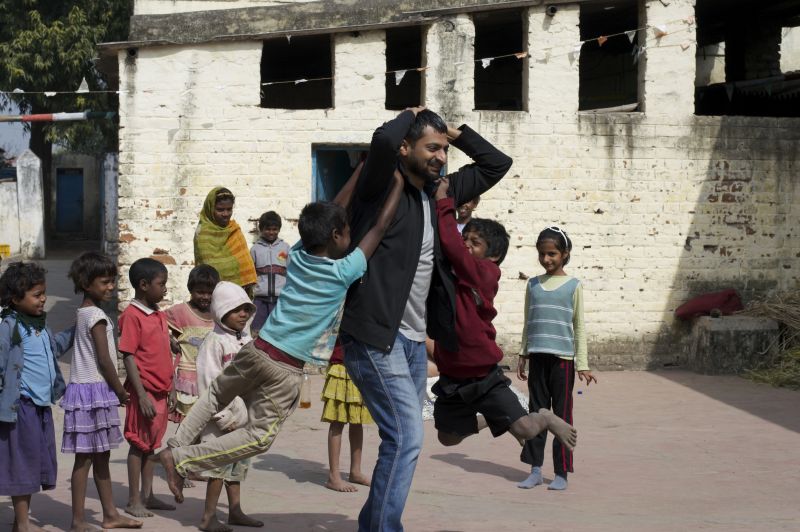
Every day when we would walk in to the ashram and touch his feet, we could see his eyes light up and express happiness of seeing young people interested in learning more about Vinoba Bhave and living life based on truth, love and compassion. As we told him stories about work of ServiceSpace and the Moved By Love project that is particularly inspired by Vinobaji, he expressed a desire to meet more people 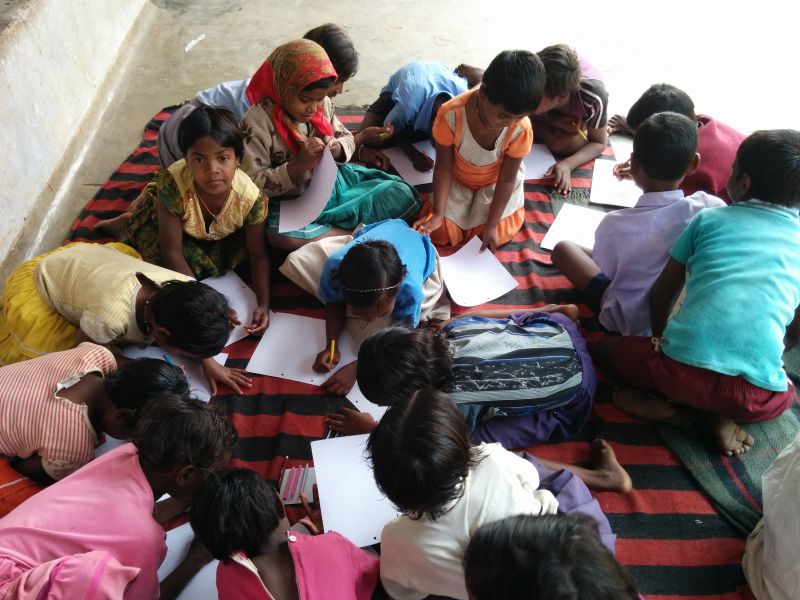
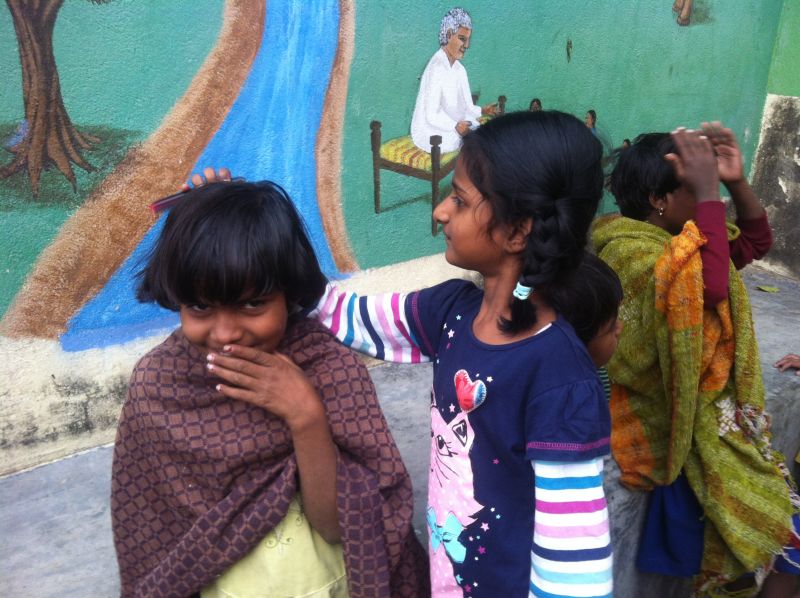
Passing on his wisdom to the younger generation
Dwarkoji has given us his hand-written diary with his thoughts on the way forward. The diary is a treasure of wisdom as it contains his reflections on what Vinobaji had suggested as the way ahead.
It was super inspiring to see that at the age of 93, he has a deep desire and energy to engage with the youth on “Samoohik Chitta Nirman” (development of collective consciousness / soul force) with SaamyaYoga as a framework and through samanvaya (harmony) of science, spirituality and mutual trust. He said that the work at Samanvaya Ashram over the last 60 years should be seen as setting the foundation. For this Ashram to grow for the next 2,000 years and for Vinobaji’s vision of “Jai Jagat” to come true, we need the younger generation across the world to work together.
“How can I serve Dwarkoji?”
If that’s the feeling you share too, then here are a few ways in which you can serve.
a) Most importantly, he is looking for young and sincere people to work with him in the true spirit of Gandhi and Vinoba. So if you can give your time or recommend volunteers in your network, that would be of great help. He is also looking for teachers who truly believe in the Nai Taleem method of education.
b) Then there is a wealth of wisdom he has shared with us in the form of hand-written notes and audio conversations in Hindi language – it would be very useful to have them translated in English so members from our global eco system can understand and participate.
c) The ashram infrastructure needs improvement, but ‘the software is more important than hardware’, so if good hearts join hands to serve, resources will definitely be made available for renovation of the physical infrastructure.
And most certainly, please send your love and metta!
The Last minute Surprise
When we mentioned that we’ll be leaving the next day, he said he will see us off! He wanted to know where we were staying and what time we were leaving. Knowing that he is 93 and tends to forget what he says, we didn’t expect him to drop by early in the morning. To our surprise, we found Dwarkoji knocking at our door at 6:30 am! He got someone to drop him on a two-wheeler to our place of stay that was a couple of kms away from the Ashram:)
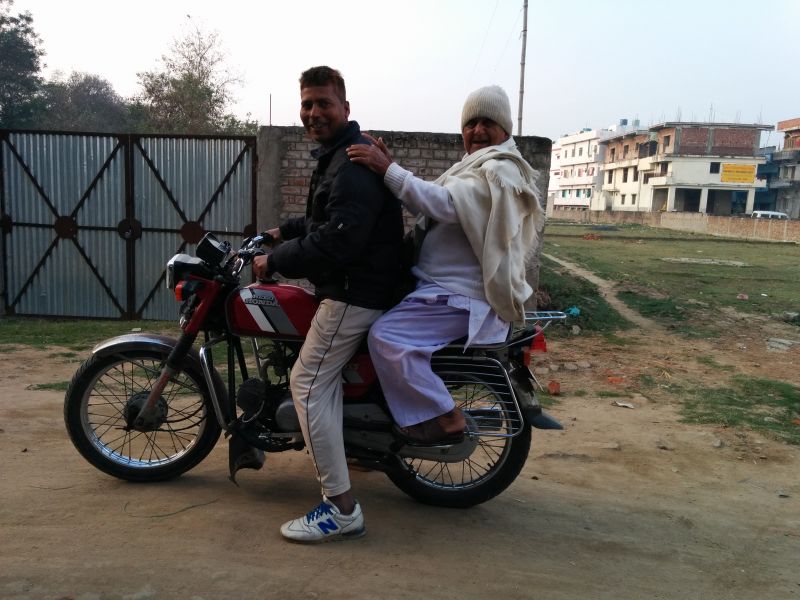
“Jeevanam Satya Shodhanam”- he spoke about the purpose of life is to search for the universal truth. Each person takes a unique journey to experience this truth; ultimately it will lead us to the realization of oneness.
One of the parting stories he shared was this: Once Gandhiji was sitting and talking to a small group of people at the ashram and one of them noticed that there was a Cobra snake on the shawl draped over Gandhiji’s shoulder. The person sitting in front of him noticed the cobra first, began to panic and quickly informed everyone about it. However, Gandhiji remained very calm. A few people immediately got up, caught the snake and left it in the jungle nearby. When they returned, one person asked Gandhiji how he could remain so calm even after hearing that a poisonous snake was sitting on his shoulder. Gandhiji said that he turned his eyes towards the shoulder without moving his head and looked at the snake. He had two dominant thoughts in those few seconds:
1) If the time of my death has arrived, I will accept it
2) I felt a lot of compassion towards the snake
“Compassion towards the snake?” one of them wondered. Gandhiji replied that if the snake would have bit me and had I died, then one of you could have harmed the snake out of anger. That thought made me feel compassionate towards the snake.
“Chitta shuddha tari, shatru mitra hoti.
Vyaghra he na khaati, sarp taya.”
When the ‘mind’ is pure, even your enemy will become a friend.
Neither will a lion eat you nor will a snake bite you.
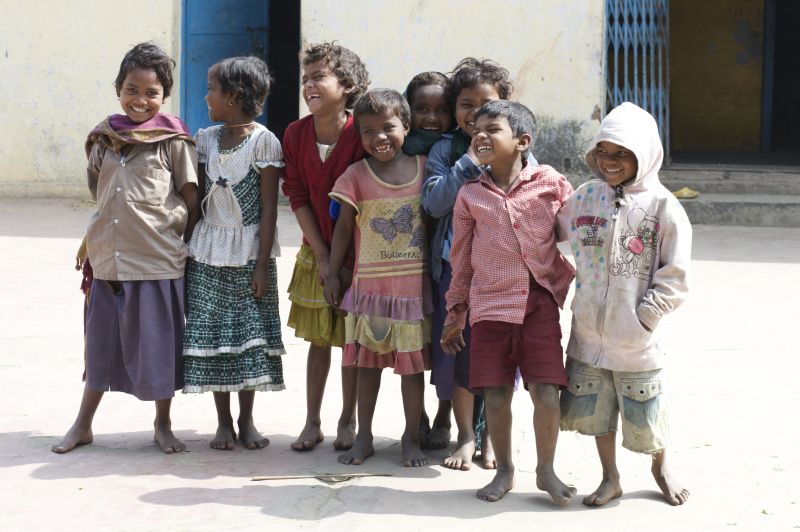
Hearing such words of wisdom from Dwarkoji, who has lived a life filled with compassion and inner purity, has the power to shift something deep within. Feeling deep gratitude for the opportunity to be in his presence.
Posted by Deven Shah on Feb 19, 2015


